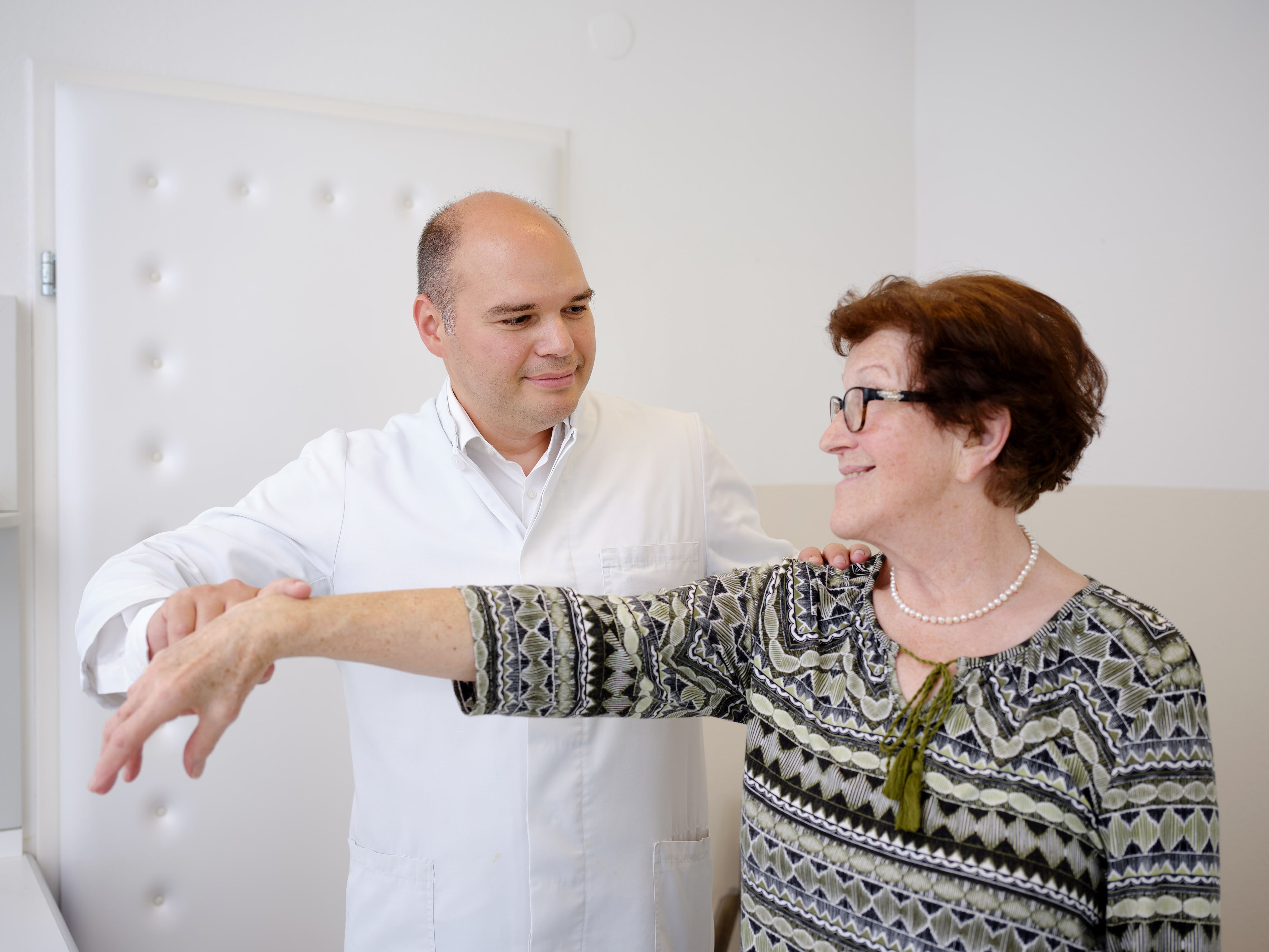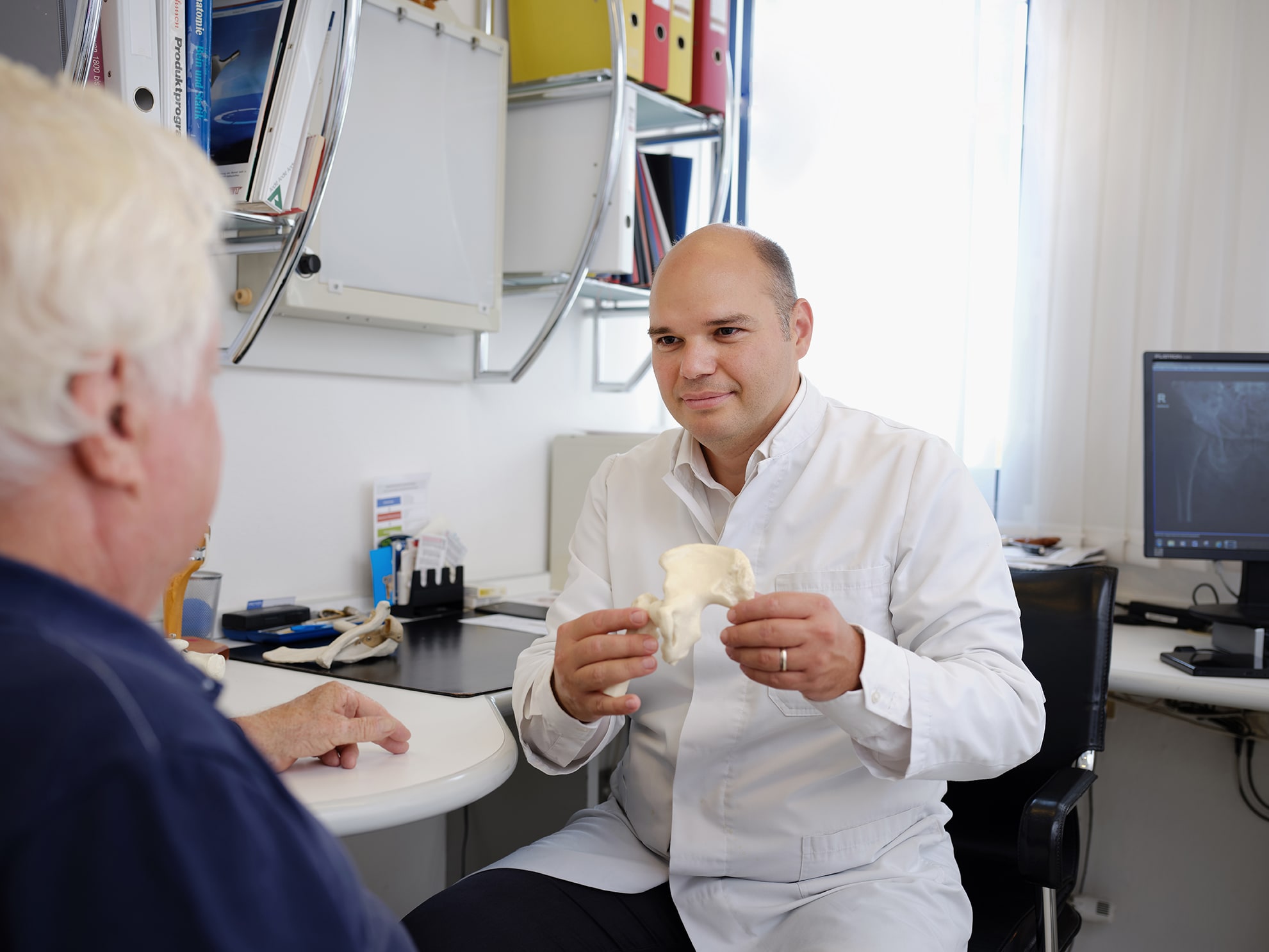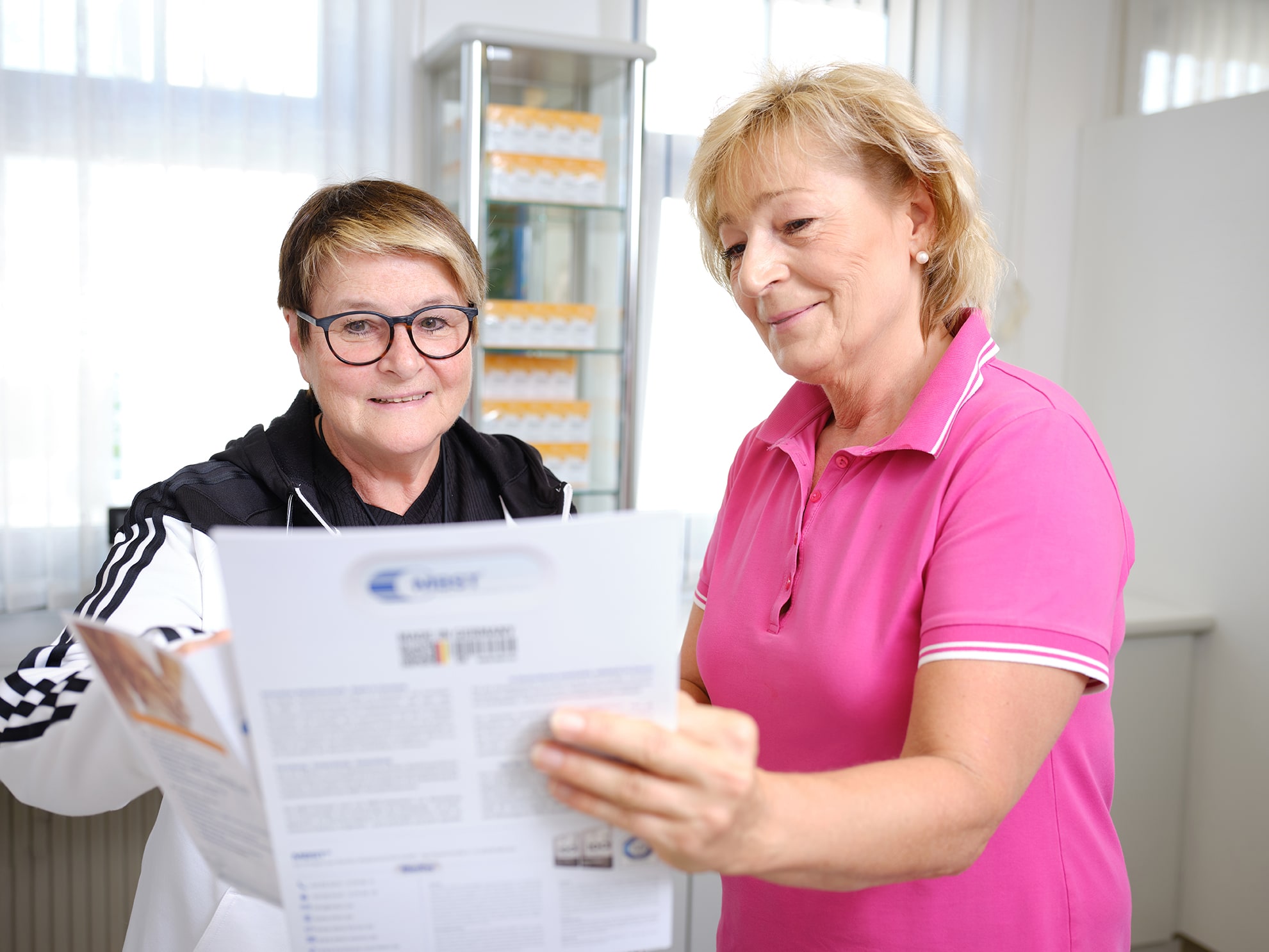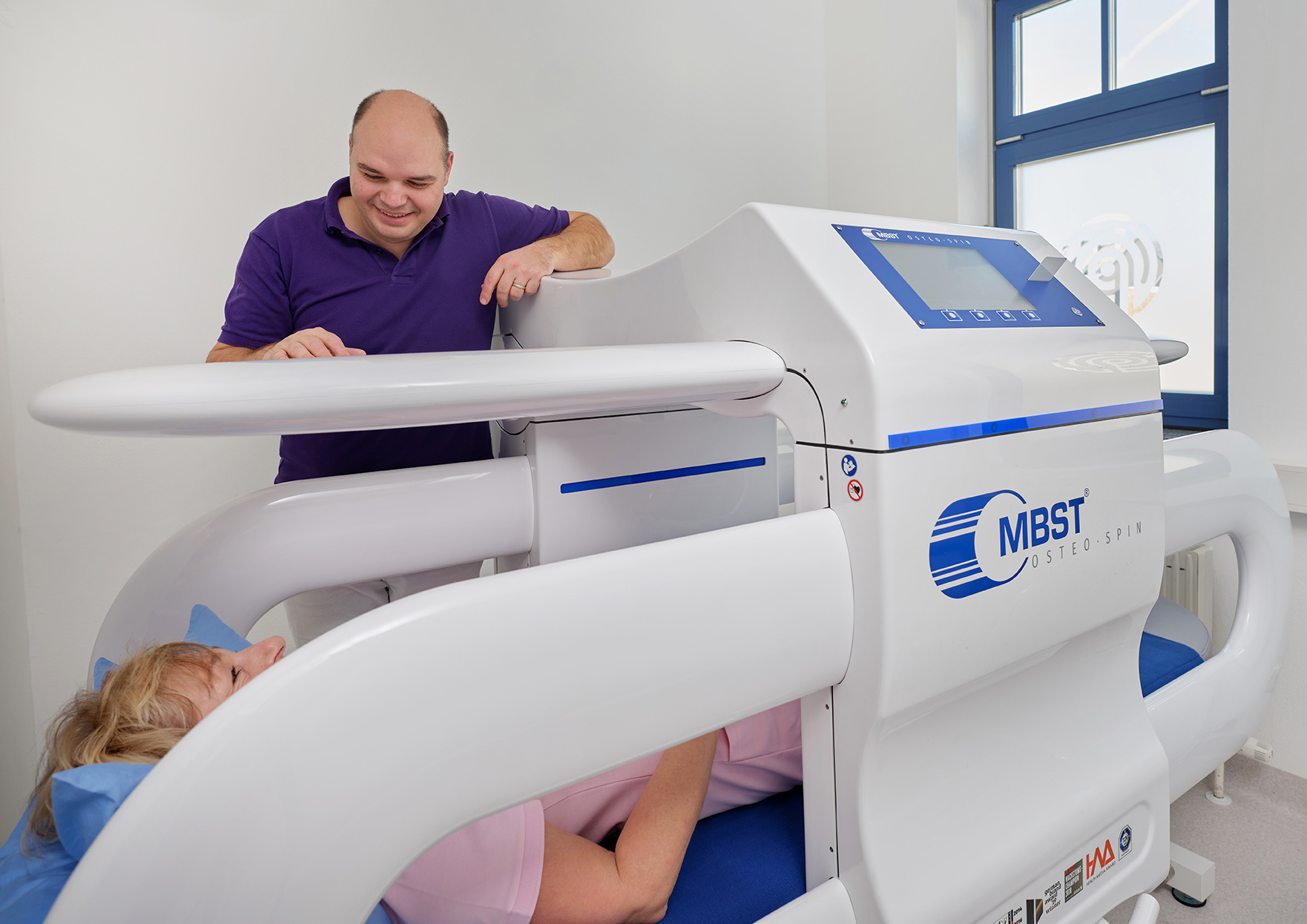Knee
Meniscus
The meniscus has an important shock absorbing function in the knee and makes the joint partners fit together. Injuries to the meniscus lead to complaints occurring on the inside or outside of the knee. The mobility of the knee joint can be limited.
Ligament tear (outer and inner ligament, cruciate ligament)
The inner and outer band stabilize the knee laterally. An injury causes pain, with swelling in the knee. Due to the loss of stability, a buckling (giving way) when walking can be perceived.
Rupture of the anterior and posterior cruciate ligaments
The anterior and posterior cruciate ligaments stabilize backwards and forwards. An injury causes pain with swelling in the knee. Due to the loss of stability, a buckling (giving way) when walking can be perceived.
Knee arthrosis (gonarthrosis)
Due to an inflammatory condition, the cartilage covering is lost. Damage to the articular cartilage can result in pain, swelling, restricted movement and overheating of the knee, etc
Bone edema or bone marrow edema or bone bruise
Accumulation of water in the bone which, in extreme cases, can lead to the death of the bone. The increased pressure in the bone causes microfractures, which are painful.
Hips
Osteoarthritis of the hip (coxarthrosis)
Damage to the articular cartilage, which can manifest itself as pain in the hip, groin or knee and can lead to restricted movement.
Trochanteric bursitis (bursitis)
Inflammation of the bursa at the greater trochanter which can manifest itself as pain in the hip.
Bone edema or bone marrow edema or bone bruise
Accumulation of water in the bone which, in extreme cases, can lead to the death of the bone. The increased pressure in the bone causes microfractures, which are painful.
Spine
Herniated discs with nerve irritation Wear and tear of the intervertebral joints (facet joint arthrosis)
Low back pain
Sciatica
Bone edema or bone marrow edema or bone bruise
Accumulation of water in the bone which, in extreme cases, can lead to the death of the bone. The increased pressure in the bone causes microfractures, which are painful.
Shoulder
Frozen shoulder
Severely painful restriction of movement of the shoulder without a cause, due to injury or after an operation.
Impingement syndrome
Tightness under the acromion. The tendons under the acromion can rub and become worn. In most cases, no surgical intervention is required.
Osteoarthritis of the shoulder joint
Wear and tear of the joint between the acromion and the collarbone.
Splitting of the acromioclavicular joint (acromioclavicular joint splitting)
The ligaments that stabilize the acromioclavicular joint tear. This appears to cause the collarbone to rise higher on the shoulder side. Depending on the severity, surgical therapy using the keyhole technique is necessary, which is ideally carried out shortly after the injury.
Calcified shoulder
Calcium builds up in the tendons of the shoulder cap, which can result in severe shoulder pain.
Rotator cuff tear
Tearing or tearing of the tendons of the shoulder cap.
Shoulder instability
This can be caused by an accident or without an accident. In the case of an accident-related dislocation of the shoulder, the focus is on surgical therapy at a young age.
Elbow
Tennis elbow
Inflammation of the tendon attachments at the elbow that stretch the wrist or fingers.
Golfer’s elbow
Inflammation of the tendon attachments on the inside of the elbow.



















